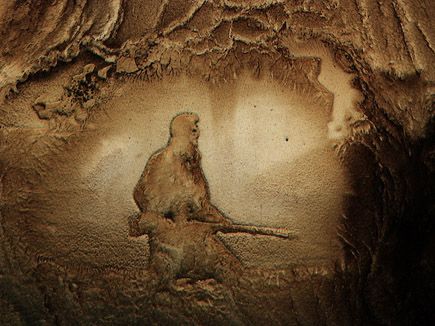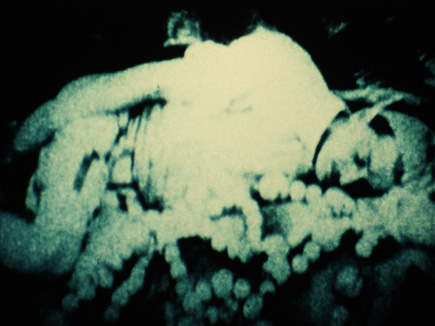Phil Solomon’s American Falls
Sunday 23 October 2011, at 4pm, NFT3
‘Should anyone imagine that the art of alchemy died with the Middle Ages, Phil Solomon’s American Falls testifies to the contrary: both to the possibilities of photographic and digital transformation and to the magical emanations of their fusion.’ (Tony Pipolo, Artforum)
American Falls
Phil Solomon | USA 2010 | 60 min
In his sublime 16mm films, Phil Solomon chemically alters photographic imagery to create a thick celluloid impasto that infuses footage with profound emotional resonance. For American Falls, Solomon rifles through a collective memory fashioned from both fact and fiction, mixing elements from newsreels, actualities and narrative films in a monumental retelling of American history which draws parallels with and reflects upon the current state of the nation. Houdini, Harold Lloyd, Keaton and King Kong commingle with presidents, gold-diggers, railroad barons and the civil rights movement. ‘My project is ultimately one of great hope, stemming from a life-long love for this American experiment of ours … but it is also necessitated by my deepest concern for its present and future directions.’ Originally conceived as a 360-degree installation around the walls of the Corcoran Gallery of Art’s rotunda, the work has been reconfigured for the cinema as a panoramic view in triptych, with surround sound mix by composer Wrick Wolff.
What’s Out Tonight Is Lost
Phil Solomon | USA 1983 | 8min
‘The film began in response to an evaporating relationship, but gradually seeped outward to anticipate other imminent disappearing acts: youth, family, friends, time … I wanted the tonal shifts of the film’s surface to act as a barometer of the changes in the emotional weather.’ (PS)
Preserved by the Academy Film Archive, Los Angeles.
Mark Webber
Also screening:
Tuesday 25 October 2011, at 4pm, NFT3
Phil Solomon will present screenings of his earlier films at Tate Modern on 24 & 27 October.




